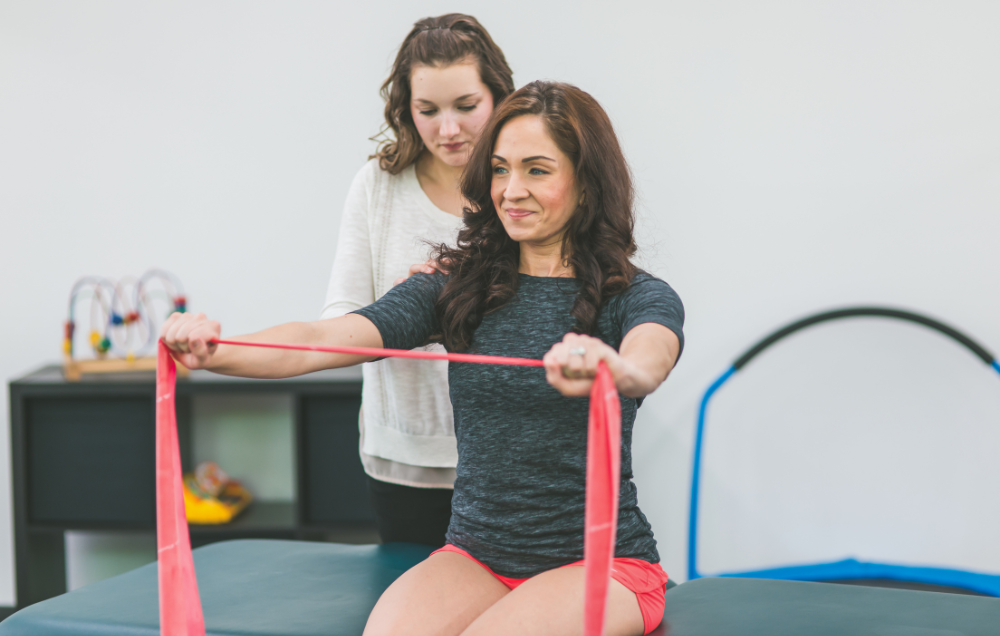Contents
Occupational therapy (OT) and physical therapy (PT) are important parts of health care. They each have distinct roles in the journey to recovery. While they share common goals, they use unique approaches to meet individual needs. By understanding their similarities, differences and the diverse range of conditions they address, you can make informed decisions about your health care.
Similarities between occupational therapy and physical therapy
Occupational therapy and physical therapy share several key similarities:
- Patient-centered approach — Both treatments focus on improving a person’s independence and well-being. Therapists work closely with patients, tailoring interventions to address specific goals and challenges.
- Holistic approach — Therapists in both fields perform complete assessments to understand each person’s physical, emotional and social needs. This approach allows therapists to create individualized plans by considering the whole person, not just a condition or injury.
- Functional improvement — Both therapies aim to help improve a person’s functional abilities. These abilities can be regaining mobility, improving motor skills, or the ability to complete daily tasks. The ultimate goal of therapy is for people to actively participate in daily activities and routines more easily.
- Collaboration — Occupational and physical therapists often collaborate with other health care disciplines. They work alongside other professionals to provide the best care to their clients.
Differences between occupational therapy and physical therapy
Occupational therapy and physical therapy differ in their focus areas and methods:
Occupational therapy:
- Focus — The focus of OT concentrates on helping a person to improve their ability to perform daily activities. It also helps address fine motor skills, cognition and psychosocial aspects. It can help boost independence in meaningful activities.
- Methods — Occupational therapists use a variety of techniques, adaptive equipment and modifications. These are used to help people complete their daily tasks. They work with people who are recovering from strokes or traumatic injuries, have arthritis, or have developmental disorders.
Physical therapy:
- Focus — PT primarily focuses on helping people to improve their physical function, mobility and strength. It also helps address gross motor skills, gait, posture, balance and pain management. It can be essential for people recovering from surgeries, orthopedic conditions, neurological disorders and sports injuries.
- Methods — PT uses exercises, stretches, manual therapy, modalities and specialized equipment to help improve a person’s physical abilities. It is instrumental in helping people to regain their mobility after surgeries, accidents or illnesses.
Conditions that can be helped by occupational therapy or physical therapy
Both therapies can be beneficial for a variety of conditions.
Occupational therapy can be beneficial for conditions like:
- Neurological conditions — Individuals recovering from strokes or traumatic brain injuries or who have conditions like multiple sclerosis or Parkinson’s disease can all be aided by OT. It can help boost their independence in daily activities and cognitive functions.
- Pediatric disorders — Children with developmental delays, autism spectrum disorders and sensory processing issues can build and strengthen essential skills for school and social interactions.
- Orthopedic conditions — OT can help people recovering from orthopedic surgeries, fractures and arthritis. It can help improve their joint mobility and ability to perform daily activities.
Physical therapy can be beneficial for conditions like:
- Orthopedic injuries — PT can be essential for people recovering from fractures, joint replacements, sprains, strains and other musculoskeletal injuries. It can help people restore their range of motion, strength and functionality.
- Neurological disorders — PT can help people with conditions like spinal cord injuries, traumatic brain injuries and cerebral palsy. It can help them to improve their mobility, balance and overall physical function.
- Sports injuries — Athletes recovering from sports-related injuries like ligament tears or muscle strains or needing post-surgery rehabilitation can regain their strength and agility with PT.
Benefits of physical therapy
PT boasts many benefits, making it an essential part of recovery. Benefits can include:
- Pain management — Techniques like manual therapy, heat therapy and electrical stimulation can all be used to help manage pain effectively. Therapeutic exercises can also help reduce chronic pain and discomfort.
- Improved mobility — PT helps people improve their mobility, flexibility and balance. People can regain their ability to walk, move, and perform daily activities independently as they recover from surgeries or injuries.
- Surgery prevention — In some cases, PT can help prevent the need for surgery. It can help strengthen muscles, improve joint stability and alleviate pain. This can potentially remove the need for surgical intervention.
- Improved functionality — PT can help people perform tasks they have previously found challenging.
- Personalized care — PT plans include personalized treatment plans that are customized to each person’s unique needs and goals. This approach helps to maximize treatment effectiveness.
- Faster recovery — PT can help boost recovery time after surgeries or injuries. It can help promote tissue healing, reduce swelling and enhance overall recovery.
- Improved quality of life — PT can significantly improve a person’s quality of life. It helps address physical limitations and helps reduce pain, allowing people to enjoy life with greater ease and comfort.
By examining occupational and physical therapy’s similarities and differences, you can determine which approach will best fit your specific needs and concerns. Both treatments are beneficial approaches that can help lead to recovery and improved quality of life.
Find improved independence and pain relief with Lattimore Physical Therapy
At Lattimore Physical Therapy, we don’t just treat conditions; we help empower individuals. You are choosing a supportive partner dedicated to your well-being by choosing us. Our team of skilled physical therapists can help guide you on your journey toward improved mobility and a life with reduced discomfort. We can help you reclaim your independence and a boosted quality of life.
Contact our team today for more information or to schedule an initial appointment.



